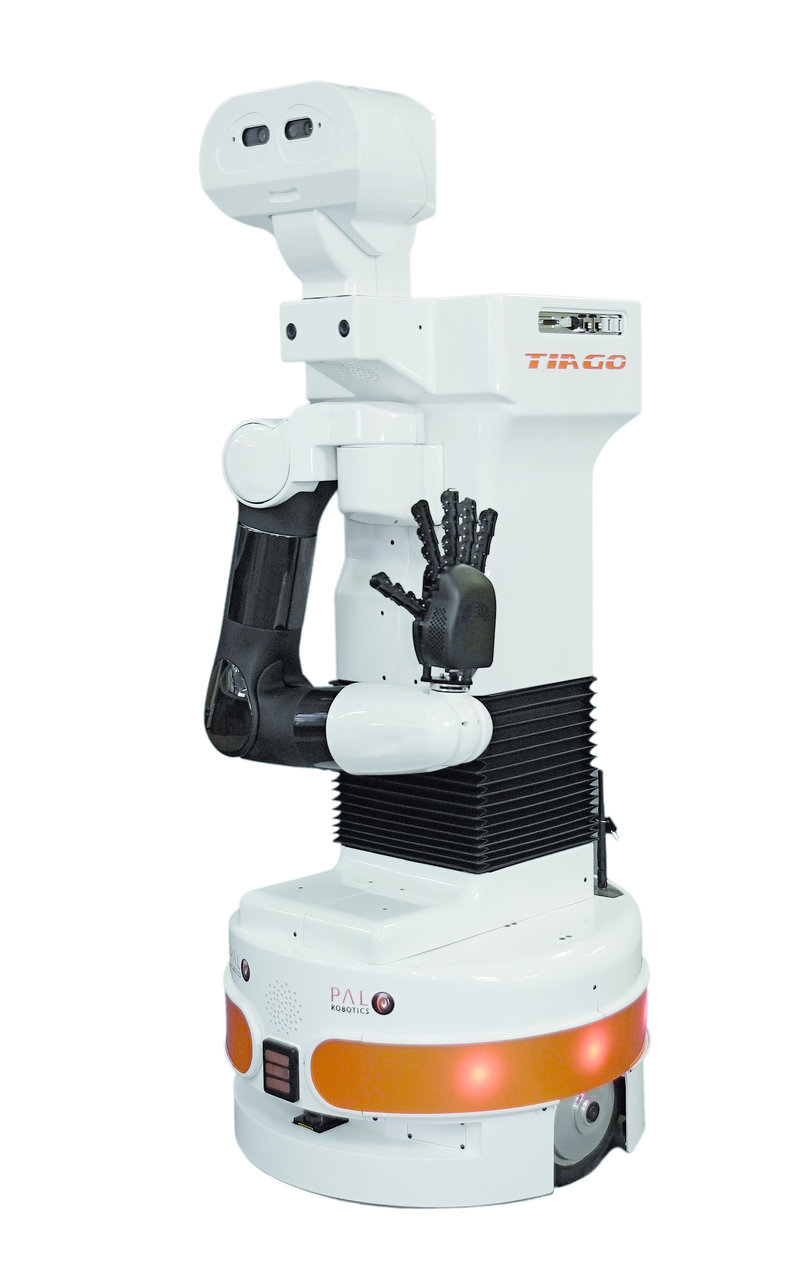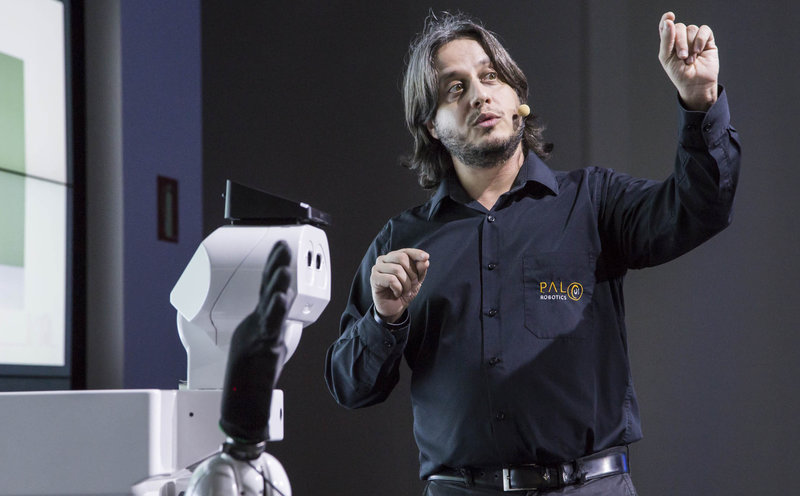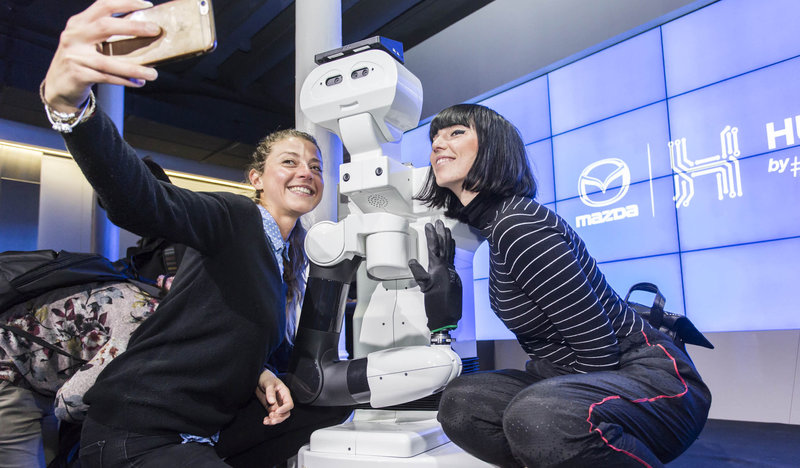Help is at hand
Tiago, a semi-humanoid creation of the Catalan firm Pal Robotics, is already being tested in households in many European countries
With the impossibility of attending to the needs of everyone in person as our lifespans grow longer, robotics is increasingly seen as a viable alternative for general care-giving of the elderly, who are also faced with ever fewer and limited resources. In fact, there are several universities, including Catalan institutions like the UAB, with projects dedicated to analysing the ethical profile of the androids that humans will have to deal with in the future.
One of them is Tiago, from Catalonia’s Pal Robotics. It is a semi-humanoid model that can support humans in various ways, from giving out medication at the right time or monitoring vital signs and physical status, to locating where the keys or mobile phone are. These are some of the platform’s capabilities that are already operational in homes in England, Holland, Poland and Greece, as part of a pilot programme involving European universities and research centres to gauge the level of care that can be provided. “The results indicate that when people with a certain level of autonomy receive the assistance of a robot at home, they are able to remain self-sufficient for up to three years longer before needing to enter a centre for the elderly,” says Francesco Ferro, CEO of the Barcelona company.
Tiago is a collaborative robot, “secure, robust and flexible,” which adapts to different tasks that can be carried out together with a human. The user can also teach the robot to develop new functions because it was designed to be very easy to program and so is accessible to everyone. In fact, the robot is able to learn movements and then repeat them as often as necessary.
“Forecasts predict that in coming years the European population of over-60s will double, so one of the solutions that may be more viable and immediate are remotely operated robots. This means that one person will be able to control robots in 10 or 20 different dwellings simultaneously and interact with those environments remotely, going further than a simple call or teleconference. So, instead of going from house to house just to be there for 10 minutes to check that everything is in order or to clean something up, there can be a more continuous assistance. This, along with the fact that people can remain self-sufficient a few years longer, represents major savings for healthcare systems,” predicts Ferro.
For this to happen, however, we need to surmount one more obstacle: the cost of robots is currently prohibitive. At present, one Tiago unit costs between 20,000 and 60,000 euros, depending on the final components required. “One of the main challenges we face is to lower the price of robots so that everyone can have one at home,” says Ferro. His idea is that this should be a reality within the next five years.
While obviously a machine, the fact that Tiago is semi-humanoid, with features that can be clearly identified, such as eyes, limbs or hands, is not accidental. On the one hand, if the robot must act in a human way, it is logical for it to have similar characteristics so as to more easily adapt. On the other hand, it is “more than proven” that our human psychology is more likely to interact with human forms, “although if it is too much like us we may reject it if it seems to threaten our identity. We want robots in our homes as something nicer than a dishwasher, but it is still a tool and not a friend,” he adds.
Tiago is capable of detecting objects previously marked with a special label, such as keys or a mobile, and can assist a person getting in or out of bed, as was shown in the Mazda Human Hardware Space cycle in Barcelona, with Tiago winning the admiration of everyone who had the opportunity to interact with it.
Pal Robotics, however, has even more advanced robots, but for now they are not ready to live with humans. One is Talos, a bipedal android that costs about 900,000 euros and is in an experimental phase, hinting at many more opportunities ahead thanks to its sensorised limbs. Also with good commercial potential is Stockbot, a robot that does not have a human form but that is dedicated to wandering around the shops finding things that are out of place. At first it had to do the job at night when the shops were closed, but now it can operate around people, even during the busiest times, as in the sales.
Humans doing the jobs of robots
The Italian Francesco Ferro was preparing his doctorate in Catalonia in 2004 when a United Arab Emirates business group launched a worldwide challenge for universities to make a robotic arm that could play chess and beat Garry Kasparov. With another Italian and two local engineers, Ferro wanted to make a bipedal humanoid that could walk to the table, play and read the game. In just 14 months they developed REEM, the first full-sized humanoid autonomous robot in Europe.
Currently, Pal Robotics has a turnover of millions, a team of 37 people, and six different models of robot, and Ferro continues to develop revolutionary ideas in the world of robotics, “Should robots have to pay taxes? It is not a ridiculous idea. What I think is that we fear that robots will take our jobs. I think we are the ones taking jobs from them. I have seen workers in assembly lines doing inhumane routine tasks. Surely they could be doing something more creative.”






